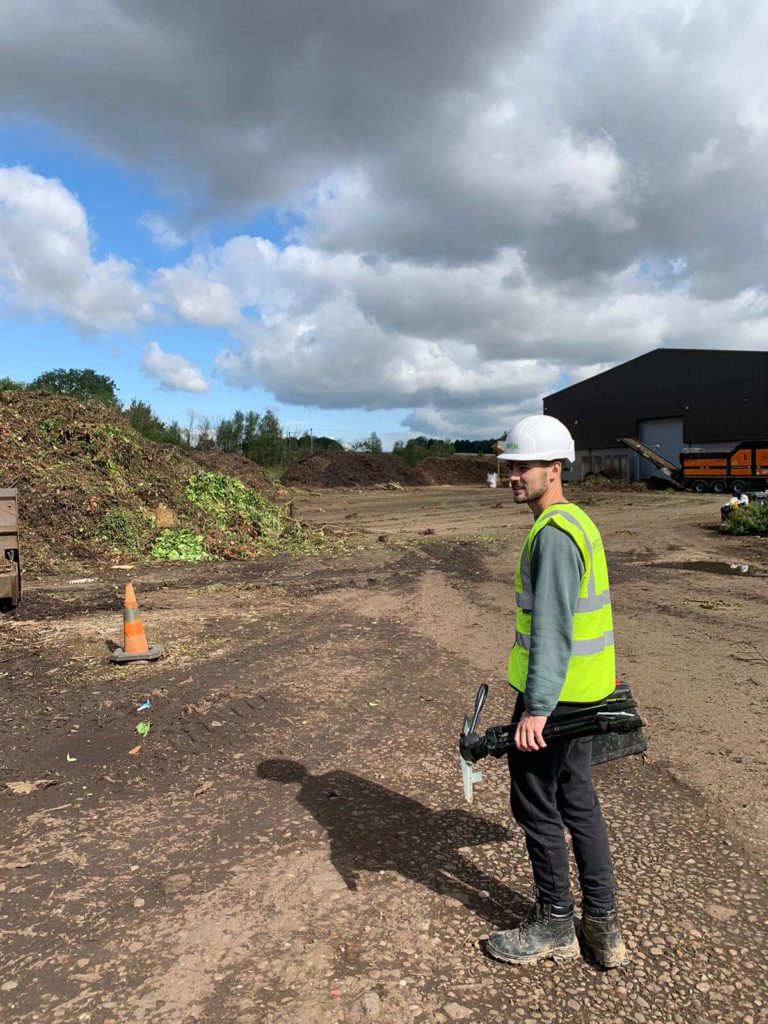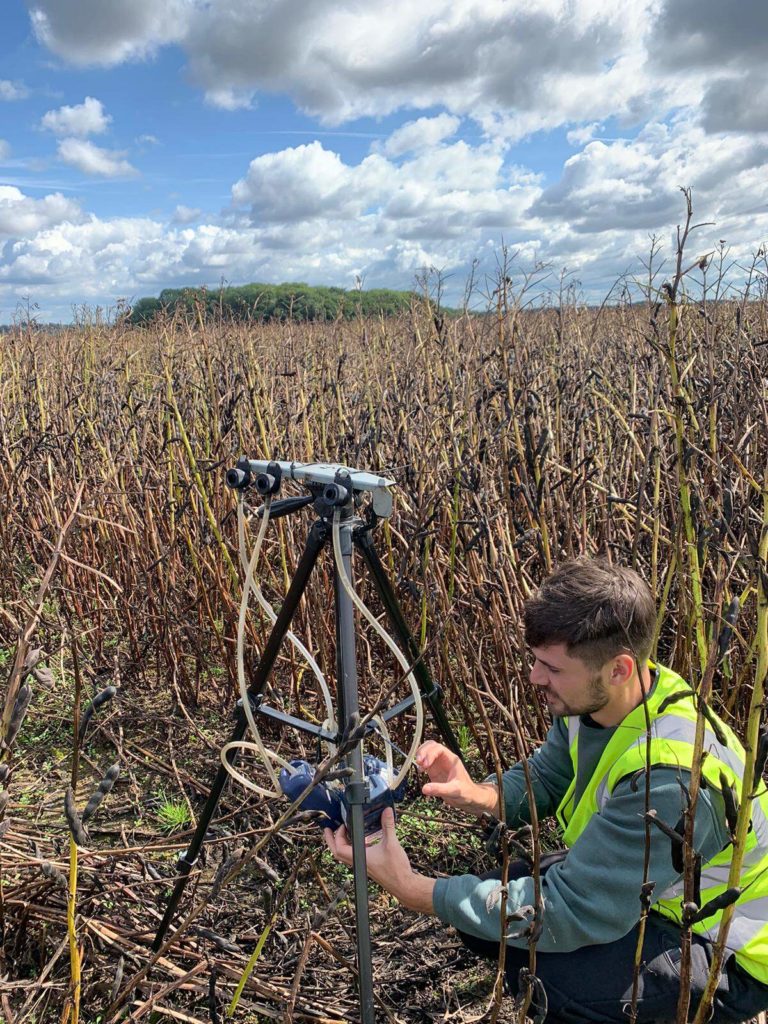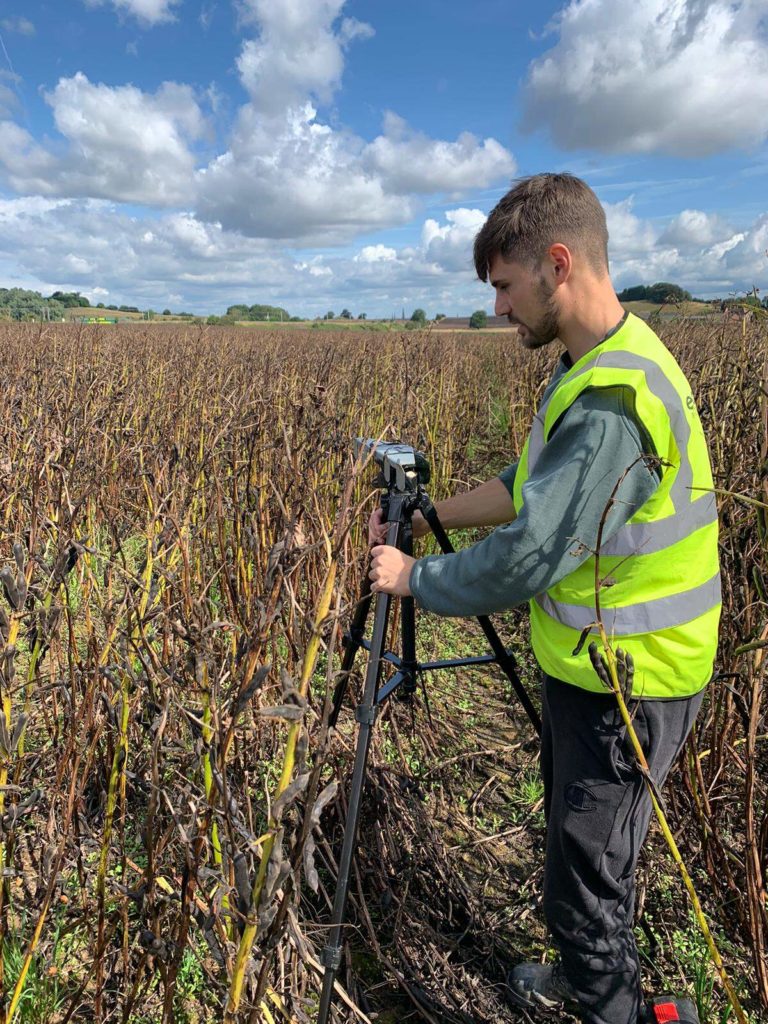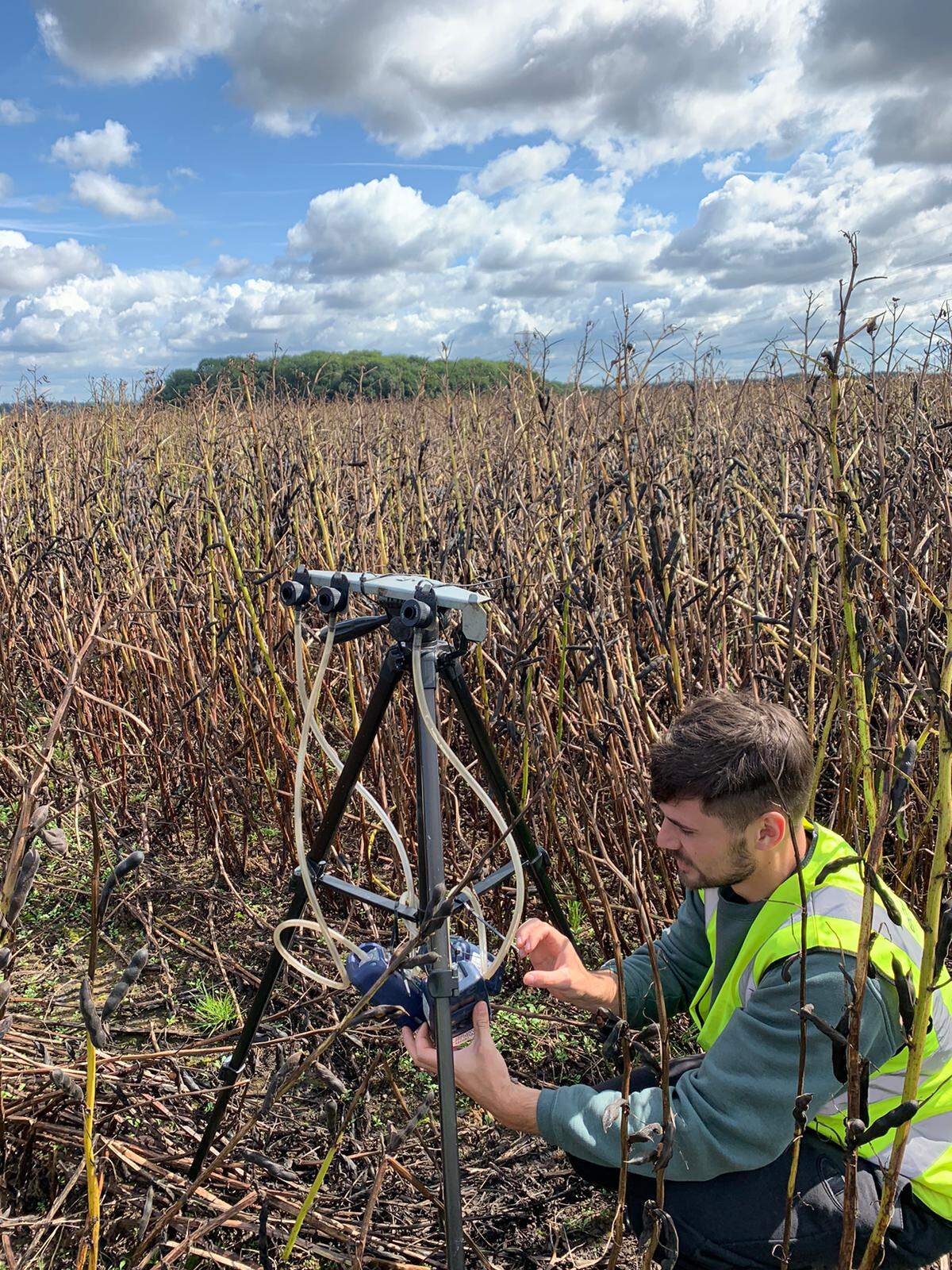Introduction
Waste management facilities in the UK handle substantial amounts of municipal, medical, and hazardous waste on a daily basis (Breza-Boruta, 2012). One emerging concern revolves around airborne bioaerosols—tiny biological particles that can affect human health (Taha et al., 2005). This article aims to explain what bioaerosols are, the risks they pose, and why monitoring them is crucial at waste sites across the UK.
What are bioaerosols?
Bioaerosols are tiny airborne particles originating from living organisms (Madsen, 2006). They are present in both outdoor and indoor air and can come from various sources, such as composting, wastewater treatment, humans, plants, animals, and soil (Schlosser et al., 2009). Bioaerosols encompass a wide range of substances, including bacteria, viruses, fungal spores, pollen, endotoxins, and plant/insect debris (Pearce et al., 2018). These particles vary in size, from less than one micron to visible dust (Tamer Vestlund et al., 2014), with smaller particles remaining suspended in the air for longer periods and spreading more widely.
Exposure Risks from Bioaerosols
Exposure to bioaerosols can lead to infectious diseases, allergies, asthma, and toxicity (Schlosser et al., 2009). These particles can transmit illnesses such as flu, tuberculosis, and Legionnaire’s disease (Breza-Boruta, 2012). In UK waste facilities, the risks are associated with contact with medical waste, compost, recycling materials, and sewage waste (Tamer Vestlund et al., 2014). Workers can inhale these particles or come into contact with them through their eyes, nose, or mouth. Additionally, emissions from landfills can carry bioaerosols to nearby areas, posing a risk to the general public (Pankhurst et al., 2011).
Impacts of Bioaerosol Exposure
Elevated levels of bioaerosols can result in irritation, infections, nausea, hypersensitivity pneumonitis, and toxicity (Schlosser et al., 2009). Long-term risks include the development of conditions like asthma, respiratory illnesses, and chronic obstructive pulmonary disease (Madsen, 2006). Endotoxins found in bioaerosols can cause fever, cell damage, and sepsis-like illnesses (Pankhurst et al., 2011). Moreover, the spread of antibiotic resistance is a concerning consequence of bioaerosol exposure (Taha et al., 2005). Overall, bioaerosols have a significant adverse impact on the health of workers and nearby communities in waste management settings.
Essential Bioaerosol Monitoring
Regular monitoring is essential at UK waste facilities to track variations, identify hotspots, evaluate risks, and implement controls (Breza-Boruta, 2012; Pankhurst et al., 2011). Monitoring methods include impaction, impingers, filters, slits, as well as microscopy, culturing, PCR, and spectroscopy for quantifying and identifying particles (Taha et al., 2005). Portable counters allow for continuous monitoring (Pearce et al., 2018). The results of these assessments inform recommendations for changes in ventilation, process controls, job rotation, and the use of protective equipment (Schlosser et al., 2009). Ongoing monitoring is crucial for managing bioaerosol hazards effectively (Madsen, 2006).
In summary, bioaerosols are hazardous airborne biological particles that demand attention and control measures at waste management sites in the UK. Robust monitoring and management programs are vital for reducing risks and safeguarding the health of both workers and the surrounding community.
Contact us for more information about regular bioaerosol monitoring.



References
Tamer Vestlund, A., Al-Azzawi, M., Abdel-Rahman, E.M., Thorsson, P., Sehlstedt, M., Lindén, J. and Elfman, L. (2014) ‘Bioaerosol exposure assessment in waste collection: a comparative study on the significance of collection equipment design’, Waste Management & Research, 32(4), pp. 339–345. doi: 10.1177/0734242X14527875.
Taha, M.P., Pollard, S.J., Sarkar, U. and Longhurst, P. (2005) ‘Estimating fugitive bioaerosol releases from static compost windrows: feasibility of portable wind tunnel approach’, Waste Management (New York, N.Y.), 25(9), pp. 945–950. doi: 10.1016/j.wasman.2005.07.021.
Schlosser, O., Huyard, A., Cartnick, K., Yanez, A., Catalan, V. and Do Quang, Z. (2009) ‘Bioaerosol in composting facilities: Occupational health risk assessment’, Water Environment Research, 81(8), pp. 866-877.
Pearce, T.A., Boundy, M., Stagg, S., Coombs, K. and Pisaniello, D. (2018) ‘Worker exposure and high time-resolution analyses of bioaerosols from compost facilities’, Annals of Work Exposures and Health, 62(9), pp. 1156-1165.
Breza-Boruta, B. (2012) ‘Bioaerosols of the municipal waste landfill site as a source of microbiological air pollution and health hazard’, Ecological Chemistry and Engineering. S, 19(2), pp. 295–309.
Pankhurst, L.J. et al. (2011) ‘Spatial variations in airborne microorganism and endotoxin concentrations at green waste composting facilities’, International Journal of Hygiene and Environmental Health. 214(5), pp. 376–383. doi: 10.1016/j.ijheh.2011.06.004.
Madsen, A.M. (2006) ‘Exposure to airborne microbial components in autumn and spring during work at Danish biofuel plants’, Annals of Occupational Hygiene, 50(8), pp. 821-831. doi: 10.1093/annhyg/mel033.
